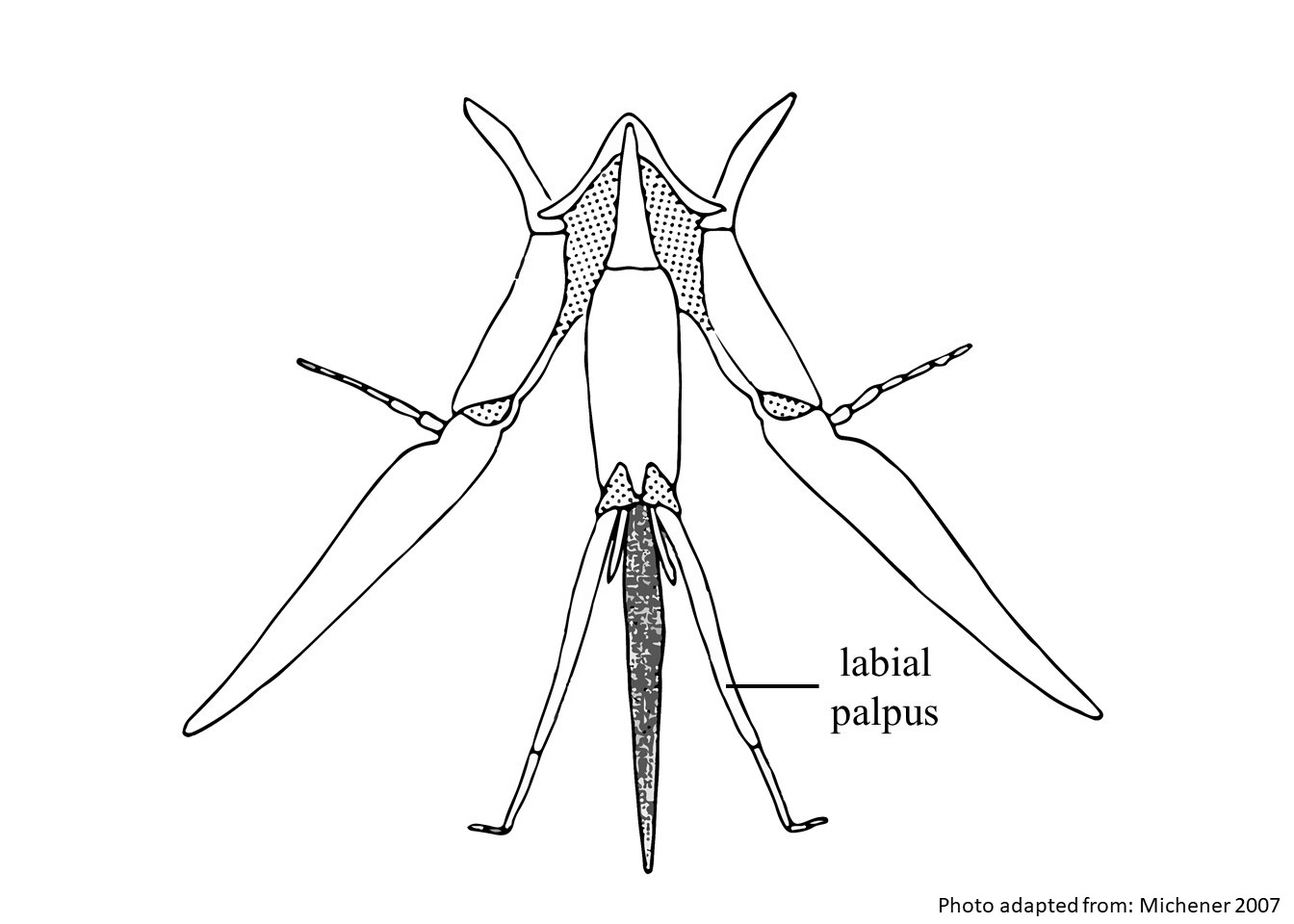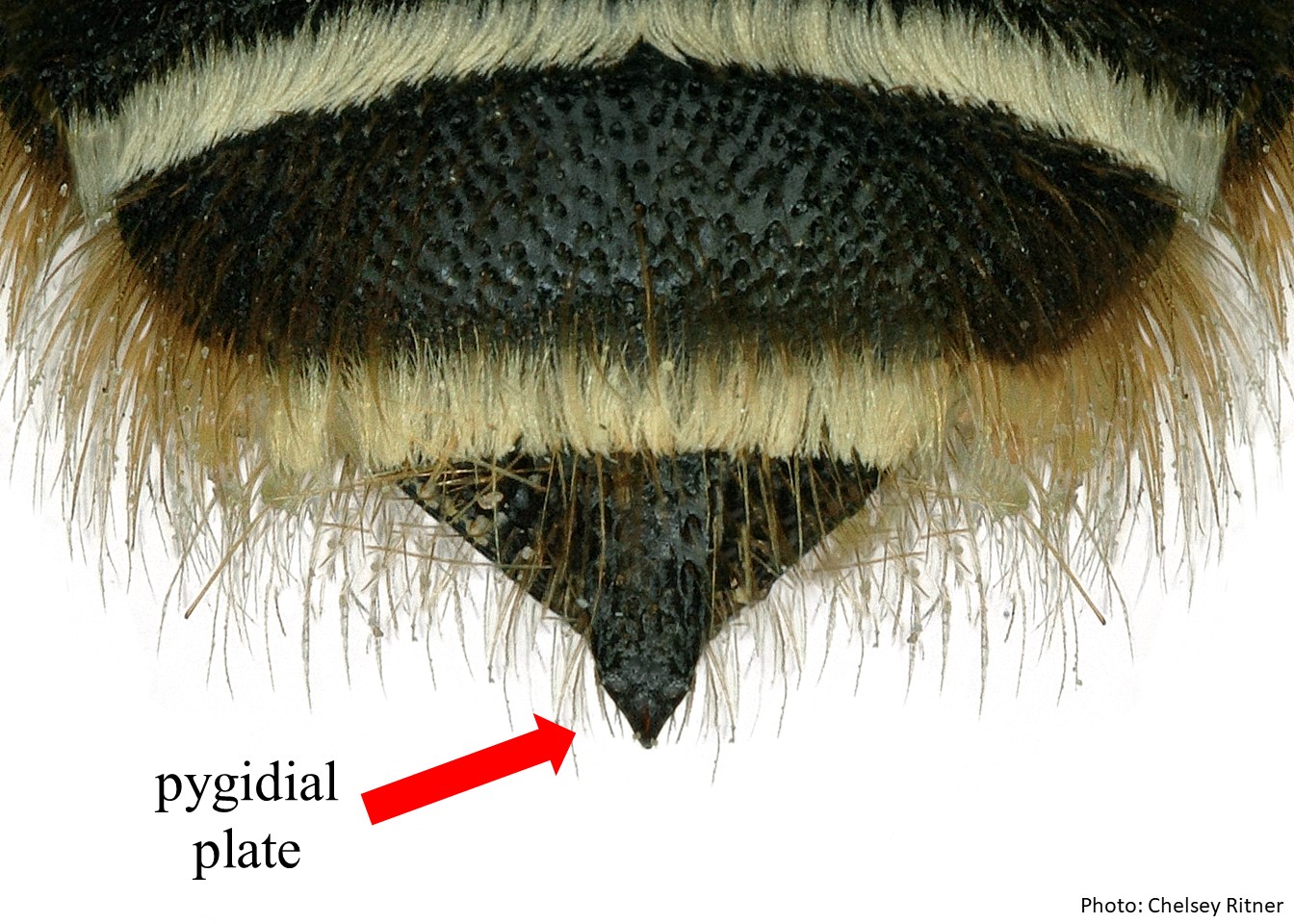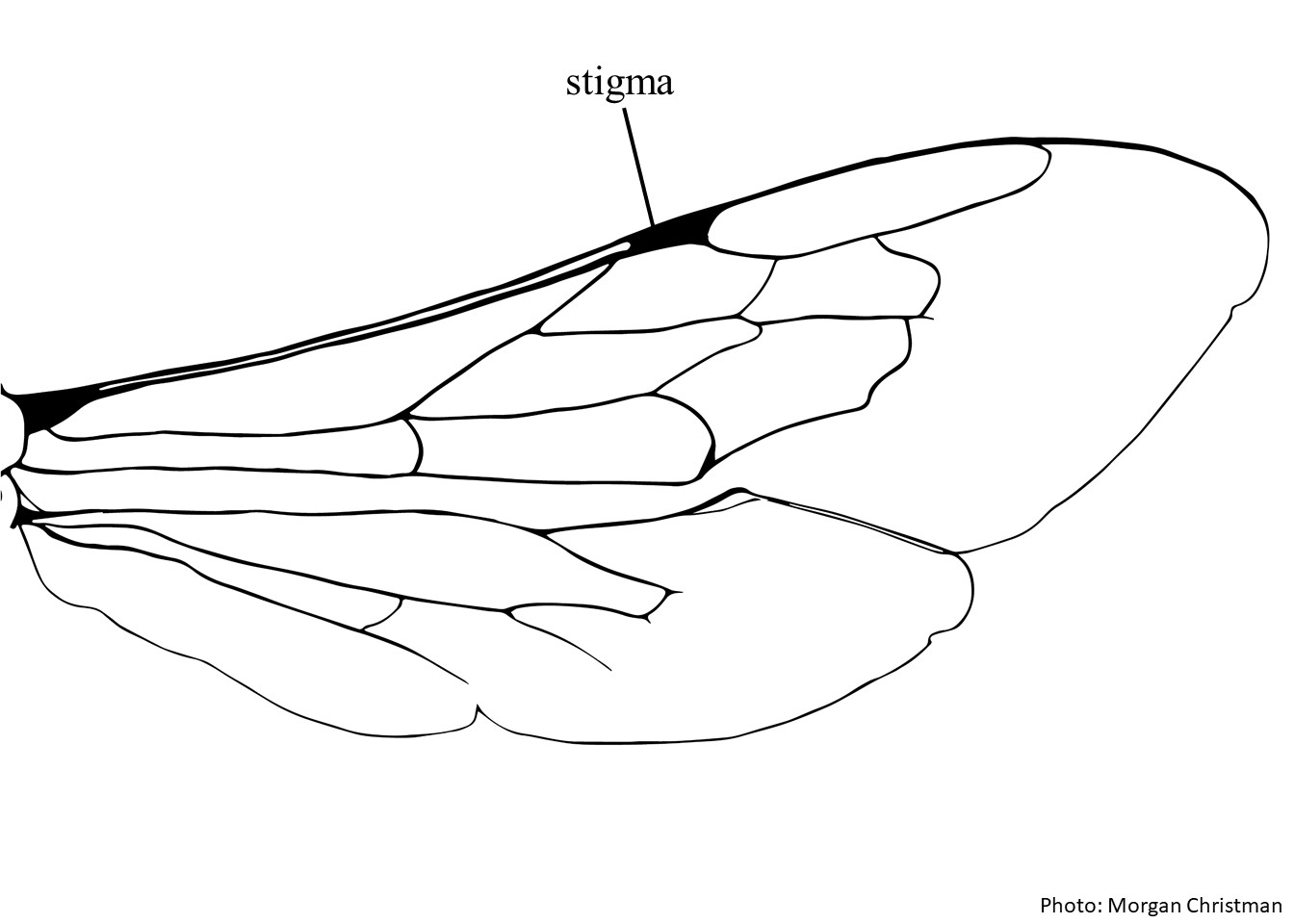Family: Megachilidae
Subfamily: Fideliinae
Tribe: Neofideliini
Genus: Xenofidelia Packer, 2017
Subgenera: none
Common name: none
Xenofidelia have a primarily black thorax and head, but the legs and abdomen have extensive orange, yellow, and brown markings (Packer et al. 2017Packer et al. 2017:
Packer, L., J. Litman, and C.J. Praz. 2017. Phylogenetic position of a remarkable new fideliine bee from northern Chile (Hymenoptera: Megachilidae). Systematic Entomology 42: 473ndash;488.). They have sparse pale pubescencepubescence:
short, fine hair
throughout their body. This genus is known from a single female specimen which has a body length of 8.2 mm (Packer et al. 2017Packer et al. 2017:
Packer, L., J. Litman, and C.J. Praz. 2017. Phylogenetic position of a remarkable new fideliine bee from northern Chile (Hymenoptera: Megachilidae). Systematic Entomology 42: 473ndash;488.)
Xenofidelia contains one species, X. colorada (Packer et al. 2017Packer et al. 2017:
Packer, L., J. Litman, and C.J. Praz. 2017. Phylogenetic position of a remarkable new fideliine bee from northern Chile (Hymenoptera: Megachilidae). Systematic Entomology 42: 473ndash;488.); none are known to occur in the U.S. or Canada.
(modified from Packer et al. 2017Packer et al. 2017:
Packer, L., J. Litman, and C.J. Praz. 2017. Phylogenetic position of a remarkable new fideliine bee from northern Chile (Hymenoptera: Megachilidae). Systematic Entomology 42: 473ndash;488.
 is short, and glossal rod is absent.
is short, and glossal rod is absent. elongate, broadest at the base and tapering apicallyapically:
elongate, broadest at the base and tapering apicallyapically: present and extremely broad.
present and extremely broad. is more than twice as long as the prestigmaprestigma:
is more than twice as long as the prestigmaprestigma:Xenofidelia looks most similar to Neofidelia and Fidelia because they are covered in pale hair, have wings with three submarginal cellssubmarginal cells:
one or more cells of the wing lying immediately behind the marginal cells, and have a broad pygidial platepygidial plate:
unusually flat area (a plate) surrounded by a ridge or line and sometimes sticking well off of the end of the bee; if present, found on the sixth upper abdominal segment in females, seventh in males (Packer et al. 2017Packer et al. 2017:
(Packer et al. 2017Packer et al. 2017:
Packer, L., J. Litman, and C.J. Praz. 2017. Phylogenetic position of a remarkable new fideliine bee from northern Chile (Hymenoptera: Megachilidae). Systematic Entomology 42: 473ndash;488.). Xenofidelia can most easily be differentiated from these genera by the nearly entirely orange abdomen, the shape of the metabasitarsusmetabasitarsus:
the basitarsi on the hind legs
(described above), and the elongated propodealpropodeal:
the last segment of the thorax
triangle (Packer et al. 2017Packer et al. 2017:
Packer, L., J. Litman, and C.J. Praz. 2017. Phylogenetic position of a remarkable new fideliine bee from northern Chile (Hymenoptera: Megachilidae). Systematic Entomology 42: 473ndash;488.). Xenofidelia also have a shorter labial palpuslabial palpus:
one of the pair of jointed, sensory structures carried on the labium of the mouth parts
 and lack a glossal rod (Packer et al. 2017Packer et al. 2017:
and lack a glossal rod (Packer et al. 2017Packer et al. 2017:
Packer, L., J. Litman, and C.J. Praz. 2017. Phylogenetic position of a remarkable new fideliine bee from northern Chile (Hymenoptera: Megachilidae). Systematic Entomology 42: 473ndash;488.).
There are no known invasives.
Floral associations are unknown. However, because Xenofidelia lacks a glossal rod, it is likely to visit flowers that have shallow nectaries (Packer et al. 2017Packer et al. 2017:
Packer, L., J. Litman, and C.J. Praz. 2017. Phylogenetic position of a remarkable new fideliine bee from northern Chile (Hymenoptera: Megachilidae). Systematic Entomology 42: 473ndash;488.).
Nesting behavior for Xenofidelia is unknown. It is likely that it’s nesting habits are similar to bees in the subfamily Fideliinae (Packer et al. 2017Packer et al. 2017:
Packer, L., J. Litman, and C.J. Praz. 2017. Phylogenetic position of a remarkable new fideliine bee from northern Chile (Hymenoptera: Megachilidae). Systematic Entomology 42: 473ndash;488.). The other tribes in this subfamily are known to build unlined nests in very dry, sandy soils that are generally restricted to arid regions (Packer et al. 2017Packer et al. 2017:
Packer, L., J. Litman, and C.J. Praz. 2017. Phylogenetic position of a remarkable new fideliine bee from northern Chile (Hymenoptera: Megachilidae). Systematic Entomology 42: 473ndash;488.).
Xenofidelia is only known from northeastern Chile (Packer et al. 2017Packer et al. 2017:
Packer, L., J. Litman, and C.J. Praz. 2017. Phylogenetic position of a remarkable new fideliine bee from northern Chile (Hymenoptera: Megachilidae). Systematic Entomology 42: 473ndash;488.).
Distribution map generated by Discover Life - click on map for details, credits, and terms of use.
Packer, L., J. Litman, and C.J. Praz. 2017. Phylogenetic position of a remarkable new fideliine bee from northern Chile (Hymenoptera: Megachilidae). Systematic Entomology 42: 473-488.